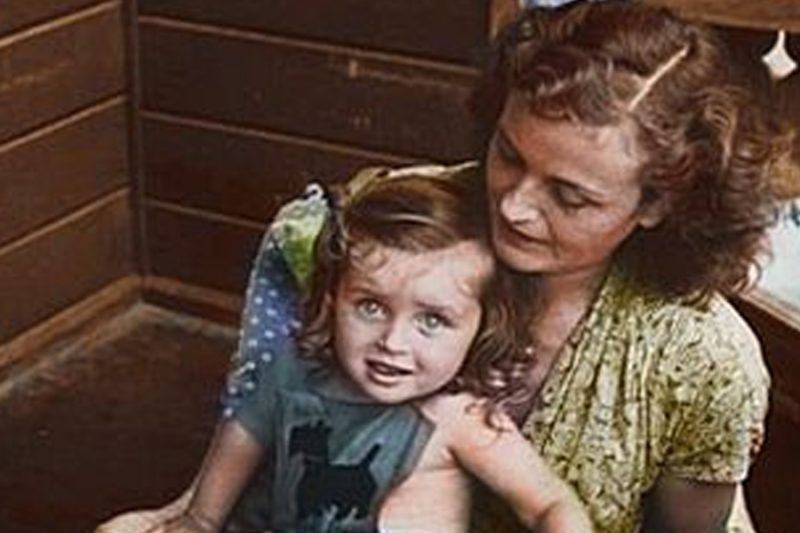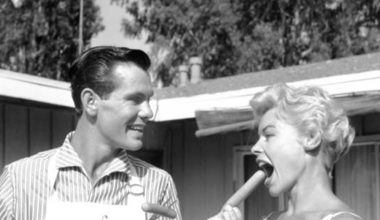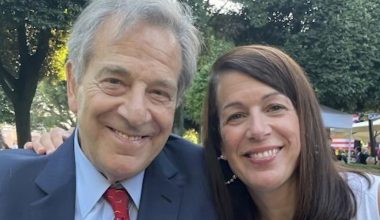Basic Information
| Field | Detail |
|---|---|
| Full name | Eva Barbara Fegelein (also appears as “Evi Fegelein-Berlinghoff”) |
| Born | 5 May 1945 |
| Birthplace | Obersalzberg / Berchtesgaden area (immediately after the fall of the Third Reich) |
| Parents | Gretl (Margarete Berta) Braun (mother) — sister of Eva Braun; Hermann Fegelein (father) — Waffen-SS officer |
| Named after | Eva Braun (aunt / namesake) |
| Step-father | Kurt Berlinghoff (Gretl Braun remarried in 1954) |
| Reported death | Conflicting records list 1971 or 1975; circumstances are variously reported and the timeline remains uncertain |
| Public profile | Private life; principally referenced in family and genealogical records |
A Birth at the End of Everything
I first stumbled across Eva Barbara Fegelein’s name the way you find stray postcards after a house fire — tucked into the margins of larger, louder histories. Born on 5 May 1945, she arrived into a world that had already been torn to pieces: Obersalzberg’s shadows, the collapsing Third Reich, a father who would not live to see her first year. There’s something cinematic about the date itself — a newborn’s first breath overlayed on the requiem of an empire — and every telling of her life seems to carry that filmic tension.
The numbers are stark: May 5, 1945. One life bookended by the snarl of war and the quieter, more private aftermath. Her given name — Eva Barbara — is itself a small historical echo: named for Eva Braun, the infamous aunt who is forever tied to the era’s most notorious couple. Names are anchors, and in Eva Barbara’s case the anchor drags a past into her future, whether she wanted it to or not.
Family at a Glance — introductions
| Relation | Name | A short introduction |
|---|---|---|
| Mother | Gretl (Margarete Berta) Braun (1915–1987) | Younger sister of Eva Braun, part of Hitler’s social circle; married Hermann Fegelein in June 1944 and later remarried. |
| Father | Hermann Fegelein (1906–1945) | A Waffen-SS officer who served on Hitler’s headquarters staff; arrested and executed in the chaotic final days of April 1945. |
| Namesake / Aunt | Eva Braun | The well-known companion and briefly — very briefly — wife of Adolf Hitler; the family connection gave Eva Barbara her first name. |
| Step-father | Kurt Berlinghoff | Married Gretl Braun in 1954; Eva Barbara is later recorded with the hyphenated surname Fegelein-Berlinghoff. |
| Grandparents | Fritz Braun & Franziska (“Fanny”) Kronberger | The family’s older generation — a quieter presence behind the headlines. |
I like lists because they feel tidy — and this family, like so many tied to history’s loud moments, is anything but tidy. Each entry here is a person who carried private stories beneath public storms.
Father and Mother: a compressed, tragic duet
Hermann Fegelein’s arc is blunt: career SS officer, close enough to the inner circle of power to be inside Hitler’s headquarters during the Reich’s final theater, and gone by late April 1945, executed amid the collapse. For a child born on 5 May 1945, that absence is more than a historical footnote; it’s the first punctuation mark on a life.
Gretl Braun’s story stretches further in time — sister to one of the era’s most infamous figures, married in June 1944 to Fegelein, and then rebuilding (or at least continuing) a private life in the decades after the war. She remarried in 1954, which gives us a small arithmetic of domestic recovery: nine years after the war, a new legal chapter began for her and, by extension, for Eva Barbara.
Public life, career, and the blank spaces
If you’re looking for a résumé, you’ll find mostly silence. There are no public careers pinned to Eva Barbara’s name, no corporate bios, no Instagram with 10k followers, no magazine profiles that turn a private life into branding. Instead, she appears as a private figure in genealogies, memorials, and the echoing narratives that orbit better-known relatives. In that way, she’s emblematic of the many lives that follow great historical ruptures — present in paperwork, shadowed in narratives, absent from center stage.
This blankness is itself a kind of story: a person who did not, or could not, convert a notorious family connection into public notoriety of her own. I like to imagine her as someone who wanted to be ordinary in a time when ordinariness felt impossible.
Death and the problem of dates
Here the record goes a little foggy — and I’m careful because fog is where mistakes grow. Accounts differ: some listings mark 1971 as the year of her death; others mark 1975, with later notations that the circumstances involved self-harm and references to poisoning in a few genealogical entries. The safe truth is this: the later life of Eva Barbara is sparsely recorded, and the online paper trail leaves the year and details uncertain.
When historical records disagree, we’re left with a patchwork: names, dates, a few administrative traces, and the human urge to fill the gaps with tidy narratives. I resist that urge here. What remains clear is that she is remembered — sometimes as “Evi Fegelein-Berlinghoff” — and that the final chapter of her life is quieter than the explosive theater into which she was born.
Why this small life matters
If you think history is only the big stage — leaders, declarations, battles — then names like Eva Barbara’s are just props. But they aren’t props; they’re the domestic residue of political storms. A child born on 5 May 1945 is a human counterpoint to headlines, a living measure of what survival and aftermath look like at the granular level. Her presence reminds us that history’s headlines always have household echoes: lullabies, stepfathers who arrive to remake kitchens, mothers who marry again, names that carry reputations no one asked for.
I’ll admit I find a certain bittersweet poetry in that: tiny human details — a date, a hyphenated surname, a contested year of death — that invite us to remember the small arithmetic of lives caught in the wreckage of public events.
FAQ
Who was Eva Barbara Fegelein?
Eva Barbara Fegelein was the daughter of Gretl Braun and Hermann Fegelein, born on 5 May 1945 in the Obersalzberg/Berchtesgaden area; she is most often referenced in family and genealogical records rather than public life.
Who were her parents?
Her mother was Gretl (Margarete Berta) Braun, sister of Eva Braun; her father was Hermann Fegelein, an officer associated with the Waffen-SS who was executed in late April 1945.
Why is her name significant?
She was named for her aunt Eva Braun, and that naming links her, by family and memory, to one of the most notorious households of the 20th century.
Did she have siblings?
There are no reliable records indicating siblings; available records generally list her as the only child of Gretl Braun and Hermann Fegelein.
When did she die and how?
Records conflict — some list 1971, others 1975, and accounts about circumstances vary; the exact year and details remain uncertain.
Did she have a public career or net worth?
No public career, major public presence, or verified net worth is recorded; she appears primarily in genealogical and memorial records.
What happened to her mother after the war?
Gretl Braun remarried in 1954 (to Kurt Berlinghoff) and lived until 1987, and Eva Barbara later appears in records with the hyphenated surname Fegelein-Berlinghoff.
Where can I find more about her?
Eva Barbara’s traces are mostly in family trees, memorial entries, and the incidental mentions that accompany biographies of her better-known relatives; the record is sparse and sometimes contradictory.






